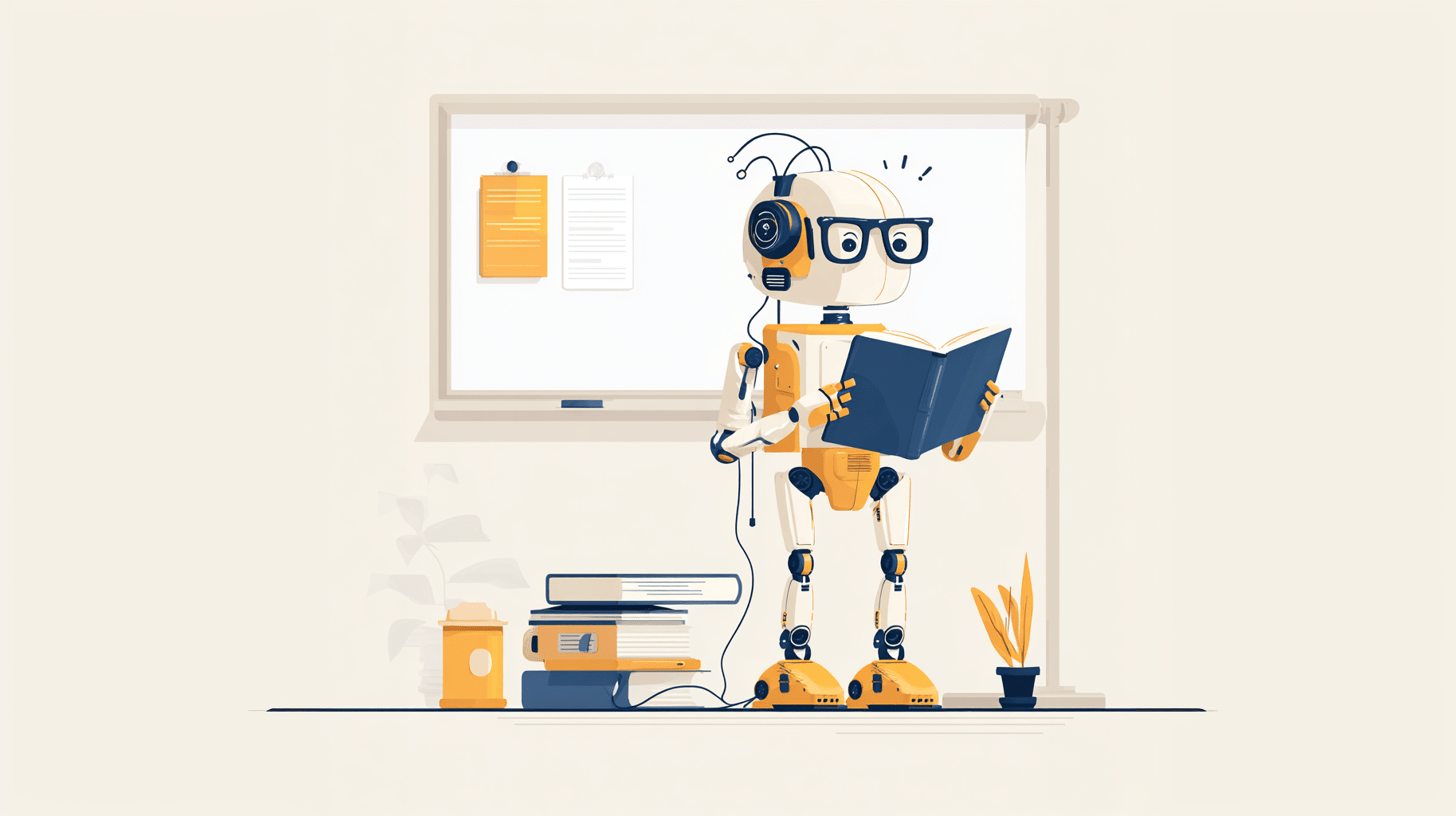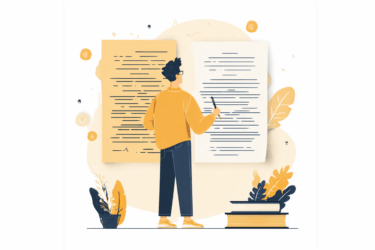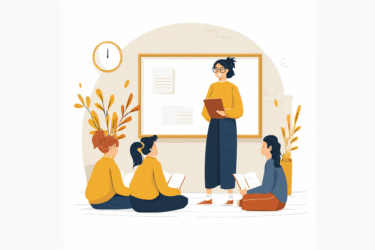Do you remember the first time you tried to ride a bicycle and fell? Or the first time you tried to solve a math problem and got the wrong answer? Most probably, it took you some time to master those skills. Every step of the natural learning process ultimately leads to the desired goal through a series of victories and failures.
Therefore, your experience shapes better decision-making and helps you understand what works best. Believe it or not, this process is very similar to how Q-Learning works in artificial intelligence.
The Q-Learning algorithm has powered some of the most impressive AI breakthroughs we’ve witnessed so far. For instance, you might have read about AlphaGo defeating world champions at the ancient game of Go by fundamentally shifting how machines can acquire intelligence.
The process has nothing in common with traditional programming, where people explicitly tell computers what to do. Instead, Q-Learning allows machines to discover optimal strategies through their own experience. Let’s explore in more detail how this elegant algorithm transforms random actions into intelligent behavior and find out why it has become one of the most essential tools in modern AI development.
What is Q learning?
In the world of artificial intelligence, Q-Learning is one of the most foundational reinforcement learning algorithms. This paradigm involves four key players working together in an endless dance of interaction:
- The agent is our AI learner.
- The environment is the world the agent operates in (it can be a maze or financial markets).
- Actions are the choices available to the agent at any moment (move left, buy a stock).
- Rewards provide the crucial feedback that guides learning (points scored or profits earned).
The “Q” in Q-Learning stands for “Quality,” as the goal is to learn the quality of an action in a given state. It’s similar to our AI-based tool that answers your inquiries like “grade my essay” and highlights the quality of your writing.
Unlike supervised learning, which requires a massive amount of labeled data to train a model, Q-Learning operates in a different paradigm. You might have a specific question at this point: “Is Q learning model free?”
And the answer is yes, it is, as the agent doesn’t need to know the inner workings of its environment. A Q-Learning robot doesn’t need to know the laws of physics to learn to walk; it simply needs to try different movements and learn from what works.
It learns purely from experience, just like you learned to ride a bicycle years ago by getting immediate feedback. When you leaned too far left, you felt that you were falling and had to adjust. When you pedaled at just the right speed while maintaining balance, you experienced the reward of smooth forward motion.
This natural learning loop is exactly what reinforcement learning replicates in artificial systems. It’s rather suitable for problems where the rules of the world are unknown or too complex to model, such as training an AI model to play a video game or control a robot.
Build Your Q-Learning Vocabulary With These Core Concepts
When you are preparing for a journey abroad, you need to understand the language basics to feel comfortable in a foreign country. Therefore, let’s establish the essential vocabulary that will serve as building blocks for your in-depth understanding of the Q learning algorithm.
State
It represents where you are in the world at any given moment. For example, in a maze, your state might be your current position and orientation. The key insight is that states should contain just enough information to predict future rewards, without unnecessary details that would complicate learning.
Action
Simply put, it’s all the moves available in your current state. This set of choices can vary because it’s impossible to capture a piece that isn’t there, and a robot can’t move through a wall.
Reward
It’s a numerical signal from the environment that indicates how well the agent is doing and provides the crucial feedback that drives all learning. Rewards can be immediate (getting points for collecting a coin) or delayed (winning a game after many moves).
The art of reinforcement learning often lies in designing reward systems that encourage the behavior you want to see. It’s like using our AI checker to spot recurring patterns in your writing that might be labeled as AI-generated phrases. You can learn to avoid such patterns and get the reward of writing polished essays.
Policy
These are your decision-making rules. A policy might be simple (“always move toward the goal”) or complex (“if in state A and it’s early in the game, then do action B, but if it’s late in the game, do action C”). Q-Learning’s ultimate goal is to discover the optimal policy that maximizes long-term rewards. In practice, many tutorials on Python Q learning demonstrate how an agent gradually refines its policy through repeated interactions with the environment.
Q-values
These numbers show you the expected long-term reward of taking a particular action in a specific state. If you’re in state S and considering action A, the Q-value Q(S,A) tells you how good that choice is likely to be, considering not just immediate rewards but all future consequences that might follow.
Q-table
The agent uses a simple matrix with Q-values to store its knowledge. The table has a row for every possible state and a column for every possible action. Initially, all the values in the table are set to zero or some small random number, as the agent has no prior knowledge. After the environment exploration, it will update these values, discovering which actions are best for each state.
Exploration and Exploitation
Should you choose the action you currently think is best (exploitation), or should you try something different to discover a potentially better option (exploration)? This dilemma appears everywhere in life, and Q-Learning provides elegant ways to balance these competing needs.
The Learning Loop: A Step-by-Step Guide
The process of Q-Learning is iterative. The agent learns through a continuous loop of interaction with its environment, and updates the Q-table with the values it discovers. Here’s how it works.
Step 1: Initialization
The first thing you need is to create and initialize the Q-table. For a simple maze with 10 states and 4 possible actions (up, down, left, right), the Q-table would be a 10×4 matrix filled with zeros, which shows the agent’s complete ignorance about the environment.
Step 2: Exploration vs. Exploitation
At the beginning of the process, the agent must try different actions to see what happens. Not surprisingly, this is called exploration. After some time, the agent starts to learn which actions lead to high rewards. When it chooses an action based on its current knowledge (i.e., picking the action with the highest Q-value from its table), this is called exploitation.
A crucial part of Q-Learning is balancing these two behaviors. If the agent only explores, it will never make use of what it has learned. If it only exploits, it might get stuck in a “local optimum” and miss out on a better solution it hasn’t discovered yet.
The common solution is the greedy policy, where with a small probability ϵ (e.g., 10%), the agent will choose a random action (exploration), and with a probability of (1−ϵ), it will choose the action with the highest Q-value for its current state (exploitation).
Step 3: The Q-Learning Update Rule
This is where the magic happens. After the agent takes an action A in state S, it observes a reward r and transitions to a new state S’. It then uses this new experience to update the Q-value for the previous state-action pair, Q(S,A), and uses the rule based on the Bellman Equation.
Step 4: Repetition
The agent repeats the process from steps 2 and 3 over thousands, or even millions, of episodes, where each episode is one complete run, from the starting state to a terminal state. Finally, the Q-table becomes more accurate, and the Q-values converge to their optimal values.
Over time, the Q-values begin to form a landscape of knowledge, with high values for actions that lead toward the goal and low values for actions that lead to obstacles or away from the target. Similarly, after using our plagiarism check tool several times to spot any unoriginal parts in your assignment, you will get a flawless essay that follows the principles of academic integrity.
Real-World Applications
While this process seems quite exciting, you need to know where and how people use it in practice. Otherwise, it will be just another interesting mathematical model that only scientists are fond of. So, here are some examples.
Gaming
Modern video games use reinforcement learning to create non-player characters that adapt to individual players’ strategies and provide challenging experiences. You will see a lot of game examples in reinforcement learning literature because game environments are perfect for the efficient coding and testing of new algorithms.
Robotics
Q-learning has become the most used learning algorithm for autonomous robotics in applications such as obstacle avoidance, wall following, go-to-the-nest, etc. From warehouse robots that navigate around human workers to robotic arms that learn delicate manipulation tasks, the algorithm makes it possible for machines to operate in unpredictable real-world environments.
Self-Driving Cars
Even though you might not engage with robots every day yet, self-driving cars have already become a usual thing in today’s reality. As you can imagine, autonomous vehicles face countless micro-decisions every second, such as when to change lanes or how to respond to unexpected obstacles. Q-Learning provides the framework for making decisions by relying on accumulated experience rather than pre-programmed rules.
Finance
The learning method we’ve described can help you find the best ways to trade stocks and reduce risks. Trading algorithms use it to develop flexible strategies that adapt to changing market conditions. The nature of Q-learning is ideal for exploring which actions tend to be profitable in different market states without using explicit models of market behavior.
Recommendation algorithms
The algorithms of the numerous apps that suggest movies, products, or content customized to your preferences also increasingly rely on reinforcement learning principles. These systems learn to recommend something that leads to your long-term engagement instead of just immediate clicks. It’s similar to using our college essay topic generator, where you get many options to choose from and eventually find something that meets your requirements.
Nothing’s Perfect
As you can see, Q-Learning has many applications and demonstrates its effectiveness in numerous situations. Nonetheless, it has some limitations, and the biggest one is the “curse of dimensionality.”
As the number of states and actions increases, the Q-table can become astronomically large, which makes it impossible to store. For example, a game like chess has so many possible states that a Q-table is simply not an option. (Luckily, our grammar checker has no limitations and ensures your content has no sign of plagiarism before you submit it.)
That’s why we now have more advanced algorithms, such as Deep Q-Networks (DQN). DQN replaces the Q-table with a deep neural network, which can approximate the Q-values without storing them. This breakthrough, demonstrated by Google’s DeepMind with Atari games, opened the door for reinforcement learning to tackle more complex problems.
What’s Next?
Now that you have a general understanding of Q-learning, why not try to implement a simple algorithm? You can start with a basic grid world environment, where you can visualize the learning process and watch the Q-values evolve.
For hands-on experience, popular frameworks like OpenAI Gym provide ready-made environments ranging from simple games to complex robotic simulations. It might be interesting for you to begin with classic problems like CartPole or FrozenLake, then gradually work up to more challenging domains, like the above-mentioned DQN, for example.
Note that the field moves quickly and there are breakthroughs regularly pushing the boundaries of what’s possible. So, try to keep up with this fast pace if you want to stay on top of the advancements in Q-learning.
All in all, mastering Q-Learning is all about developing intuition for when and how to apply reinforcement learning principles to real-world problems. Interestingly enough, your journey from a beginner to practitioner looks like a form of Q-Learning, where each project and experiment updates your understanding of what works and what doesn’t. We wish you good luck on this captivating journey!






